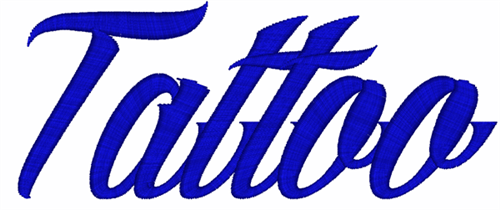
In a crunch, they can be a good option but realize that editing is usually required to get embroidery friendly results. Many fonts are unfriendly in their original form as widths/keystrokes don’t consider the rules of stitches. In most cases, TTFs were not created with the intent of being used for embroidery. Often more narrow serif type fonts will give you better results than block fonts. Generally speaking, with TTFs, the quality of the lettering depends on the shapes used. The more complex the letter, the more margin for error.
Installing keyboard fonts for tajima pulse software software#
When software programs convert TTFs automatically, they don’t take that into account, and it ends up looking like a telephone pole. Usually, when manually Digitizing the letter “t” you would path it the same way you would write it: the vertical stroke first and then the horizontal. The first problem that arises is that letters may not path logically for embroidery. The benefit of using these fonts is the sheer number of them available, but the issue with these is that the quality is a real hit and miss scenario. Many programs, including Hatch and Floriani, will automatically convert a TrueType font to stitches.

It’s kind of like your software auto-digitizing lettering files you select. TrueType fonts (or TTF for short) are fonts installed in your embroidery software and automatically converted to embroidery designs when used. They are specific to and created within an embroidery software program, and they must later be exported into a machine file format (such as PES, ART, VP3, etc) to be read on a machine. It’s kind of like the native file formats I mentioned in the Understanding Machine Embroidery File Formats article (click here to read more) : meaning any embroidery machine can’t read them. For example, the built-in fonts that come with Floriani will perform and stitch out well but are exclusive to the specific Floriani software brand. Often, the fonts that come included within your software are proprietary to that software brand. Plus, creating layouts that include designs and text makes it much more effective and a less time-consuming process. These fonts are usually keyboard-based and generally resize better than stitch files. They usually stitch out nicely but work best within the software and machine developers’ suggested sizes. This is a very tedious process and a big factor in why embroidery lettering is rarely done this way anymore.Ī far better option is to use the fonts included within various software programs or built within the embroidery machine. When using the font to write a text, the letters need to be inputted individually into a software program and arranged manually. Unless you’re an experienced digitizer, other edits are usually not recommended for these files either as they are finished embroidery designs.Īlthough some of these fonts can be beautiful, the real downside of using stitch file fonts is that they are not keyboard-based. Resizing stitch file fonts often leaves the embroiderer unsatisfied with the finished stitch results when sizing adjustments are required. The more the files/letters are resized (increased or decreased), the more they lose quality. Stitch file fonts have been digitized at a specific size, which means that they’ll run best at the size they were created. These fonts/letters have been digitized and converted to embroidery machine formats (such as PES, JEF, XXX, etc.) and are not what we could consider being “keyboard fonts” (that you can type out using your keyboard). These are single letter embroidery designs. The first type of fonts we’ll cover is what I like to call Stitch File Fonts. Understanding why some fonts look good and why others lack quality and appearance can contribute to a few factors. Given my experience, let me be clear that all fonts available for embroidery these days are NOT created equal. After you’ve digitized the letter 100,000 times, the excitement is gone. I have to admit, doing lettering all day every day was tedious and boring. That statement is so true, you can have the most beautiful logo in the world, but if the text/font within the design looks sloppy, the entire design is ruined.īack in those days, we had to punch every stitch within a design manually.

It’s hard for me to believe that I started my digitizing (punching) journey 37 years ago.

Digitizer’s Dream Course Overview & Level 1.


 0 kommentar(er)
0 kommentar(er)
